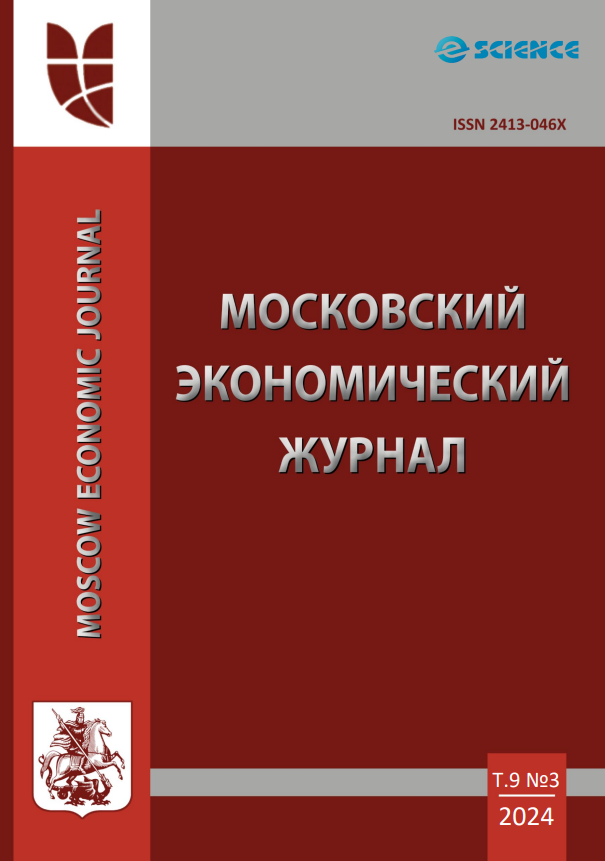UDC 005
Automation of production and economic activities at printing enterprises involves the use of advanced digital solutions or technological equipment with automatic configuration and process control functions. The key benefits of automation include speeding up order processing, increasing the accuracy of calculations, optimizing the utilization of process equipment, reducing operating costs, and increasing the efficiency of planning and managing production processes. Digital solutions enable monitoring of financial and operational flows, leading to increased productivity and profitability. The object of this research is production management systems, automated information systems, as well as methods and technologies used to optimize work processes at the stages of production of printed products. The purpose of the study is to summarize the theoretical foundations for improving the efficiency of production and economic activities in printing enterprises by using automation capabilities. Research methods: analysis of literature and scientific sources on existing theories and practices of automation in printing, graphic method, deduction and induction, systematization. The scientific novelty of the study lies in the generalization of modern approaches to automation of production, technological, economic and managerial aspects of the activities of printing enterprises, as well as in a brief overview of currently proposed digital solutions in this area.
production process management, printing enterprise, automation of enterprise activities, automation of production and economic activities
1. Belyaev, V. P. Komp'yuternaya grafika v obrazovatel'nom processe na primere poligrafii / V. P. Belyaev, V. Yu. Pavlenko, E. V. Skripchenko // Vysshee tehnicheskoe obrazovanie. – 2018. – T. 2, № 1. – S. 51-57.
2. Belyaev, V. P. Elektroprivod s udarnoy nagruzkoy v poligrafii / V. P. Belyaev // Trudy BGTU. Seriya 4: Print- i mediatehnologii. – 2023. – № 1(267). – S. 5-13.
3. Volkova, O. V. Mehanizm povysheniya effektivnosti proizvodstvenno-hozyaystvennoy deyatel'nosti predpriyatiya / O. V. Volkova, E. V. Fatalieva // Social'no-gumanitarnyy vestnik. – 2020. – № 36. – S. 145-148.
4. Demchuk, O. V. Social'no-ekonomicheskaya suschnost' i soderzhanie proizvodstvenno-hozyaystvennoy deyatel'nosti predpriyatiya na sovremennom etape razvitiya / O. V. Demchuk, V. V. Trushin // Pridneprovskiy nauchnyy vestnik. – 2019. – T. 8, № 1. – S. 3-6.
5. Izdatel'skaya poligrafiya: tendencii i perspektivy razvitiya // Universitetskaya kniga. – 2023. – № 7. – S. 64-69.
6. Koval', O. I. Ocenka ekonomicheskoy effektivnosti proizvodstvenno-hozyaystvennoy deyatel'nosti predpriyatiy molochnoy otrasli / O. I. Koval', S. N. Kosnikov // Politematicheskiy setevoy elektronnyy nauchnyy zhurnal Kubanskogo gosudarstvennogo agrarnogo universiteta. – 2021. – № 165. – S. 48-64.
7. Komarov, A. S. Ocenka kachestva cifrovoy pechati dlya operativnoy poligrafii metodom ekspertnyh ocenok / A. S. Komarov // Izvestiya Tul'skogo gosudarstvennogo universiteta. Tehnicheskie nauki. – 2022. – № 12. – S. 419-424.
8. Krasnoperova, N. A. Innovacionnye tehnologii v poligrafii / N. A. Krasnoperova // Original'nye issledovaniya. – 2023. – T. 13, № 10. – S. 126-131.
9. Medyak, D. M. Teoreticheskie osnovy formirovaniya iznosa i upravleniya iznosostoykost'yu v poligrafii / D. M. Medyak, M. I. Kulak // Trenie i iznos. – 2018. – T. 39, № 4. – S. 344-351.
10. Mirolyubova A.A., Ksenofontova O.L., Obschaya ekonomicheskaya situaciya v poligraficheskoy otrasli: metodika i statisticheskiy analiz // Izvestiya VUZov EFiUP. 2021. №3 (49). – S. 78-87.
11. Svetlova, O. A. Osobennosti kontrolya cveta v poligrafii / O. A. Svetlova // Izvestiya Tul'skogo gosudarstvennogo universiteta. Tehnicheskie nauki. – 2020. – № 12. – S. 433-436.
12. Sovremennye predpriyatiya i cifrovye tehnologii na predpriyatii / A. Matkarimov, B. Berdieva, M. Shukurov, E. Myradova // Ceteris Paribus. – 2022. – № 10. – S. 26-28.











